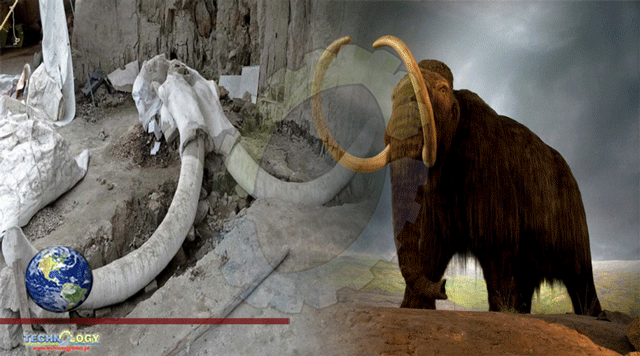Isotopes Reveal the Incredible Lifetime Journey of an Arctic Woolly Mammoth

From the isotopes inside a 1.7-meter-long tusk, researchers recreated the life history of one Arctic woolly mammoth that lived more than 17,000 years ago, offering some of the first evidence that woolly mammoths traveled vast distances. Their findings provide a window into the lives of these now-extinct creatures, including their preferred habitats and extensive lifetime range.
Despite being one of the most widely studied and iconic ice-age creatures, very little is known about the natural life history of the woolly mammoth, as fossils alone provide only static and often singular glimpses into their lives. Thus, the home range and mobility of mammoths – where and how far the large creatures roamed throughout their lives – remains largely a mystery. However, since regular migrations across great distances characterize the mobility patterns of their living elephant relatives and other Arctic animals, it is assumed that woolly mammoths exhibited similar behaviors.
One method of potentially reconstructing the mobility patterns of long-dead mammoths is through the analysis of oxygen and strontium (Sr) isotopes that become incorporated into the animals’ teeth and tusks during life. Strontium isotope ratios (87Sr/86Sr) in soils and plants reflect the underlying bedrock geology, which vary across landscapes. As animals eat these plants, 87Sr/86Sr patterns from the region become incorporated into tissues. Thus, the 87Sr/86Sr ratios contained in tissues that continually grow throughout life, like mammoth tusks, for example, can provide a record that can be used to trace an animal’s movement over time.
Using the tusk from a male woolly mammoth that lived in what is now mainland Alaska more than 17,100 years ago, Matthew Wooller and colleagues assembled a high temporal resolution isotopic record that reveals – in great detail – the mammoth’s movements during its ~28-year lifespan.
The record shows repeatedly traveled routes across a geographically extensive range, with the animal covering enough of the Alaska landscape during its 28 years to almost circle the Earth twice.
The results also illustrate the regions the animal frequented during different life stages, including as an infant and juvenile when part of a herd, as a more broadly traveling prime-aged adult, and during its final years, where, in a small region in northern Alaska, it likely succumbed to starvation.
originally from SciTechDaily